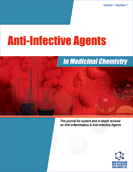Abstract
The clinical field of rheumatology utilizes numerous medications which are either structurally derived from antibiotic compounds or are actually originally track - record proven anti - infective agents adapted for use in this field. Though in many cases, exemplified by rheumatoid arthritis, a presumed infectious etiology brought about the introduction of these drugs into rheumatology, subsequent research has often failed to demonstrate an infectious agent; nevertheless such originally anti - infectious agents as hydroxychloroquine and sulfasalazine have gained a place in the rheumatologic armamentarium. This sequence of events implies that in many cases anti - infective agents posses anti - inflammatory or immuno - modulatory qualities not directly linked to their potential capacity to kill foreign pathogens. More recently agents such as cyclosporine and tacrolimus, both of antibiotic structure, have been developed specifically for their immuno - modulatory effects. This review covers the main events in the development of anti - infective agents for rheumatology and attempts to clarify the often enigmatic relationship between these two seemingly unrelated fields.
Keywords: Rheumatology, sulfasalazine, hydroxychloroquine, minocycline, tetracylines, cyclosporine, tacrolimus, rheumatoid arthritis, systemic lupus erythematosus
 15
15





















